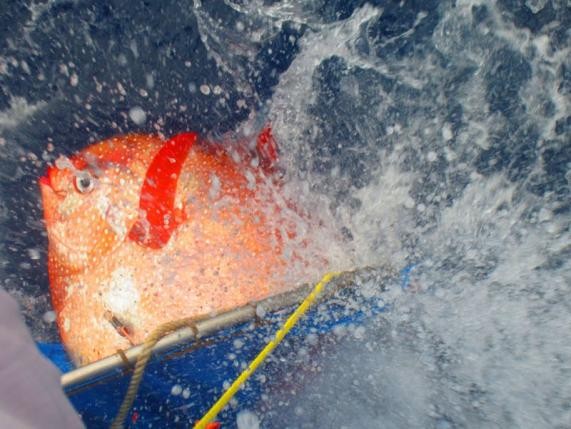With warm blood, the silvery moonfish opah, Lampris guttatus, is the first fully warm-blooded fish and an agile predator that can see better and swim faster, according to a new research.
According to the study by National Oceanic And Atmospheric Administration (NOAA) Fisheries, the opah has a competitive benefit in the cold ocean depths. Like mammals and birds, the moonfish circulates heated blood throughout its body.
The size of the opah is approximately that of a large automobile tire. Known from oceans around the world, the moonfish dwells hundreds of feet under the surface in dimly lit frosty waters.
The study titled "Whole-body endothermy in a mesopelagic fish, the opah, Lampris guttatus" was conducted by Owyn E. Snodgrass, Heidi Dewar, John R. Hyde and fisheries biologist Nicholas C. Wegner of NOAA Fisheries' Southwest Fisheries Science Center in La Jolla, Calif., as the lead author.
According to the findings, which were published in the Science journal, the opah is different from other fish because of its enhanced physiological performance and protected internal organ function due to its heated blood distributed throughout its body.
According to Wegner, he was under the impression the opah was a slow-moving fish like most other fish in cold environments before the discovery.
"But because it can warm its body, it turns out to be a very active predator that chases down agile prey like squid and can migrate long distances," Wegner explained.
The opah has large, red pectoral fins like wings, which it rapidly flaps through the water while swimming. By constantly flapping these fins, which causes the warm blood, the first fully warm-blooded fish's movement, metabolism and reaction times become faster.



























